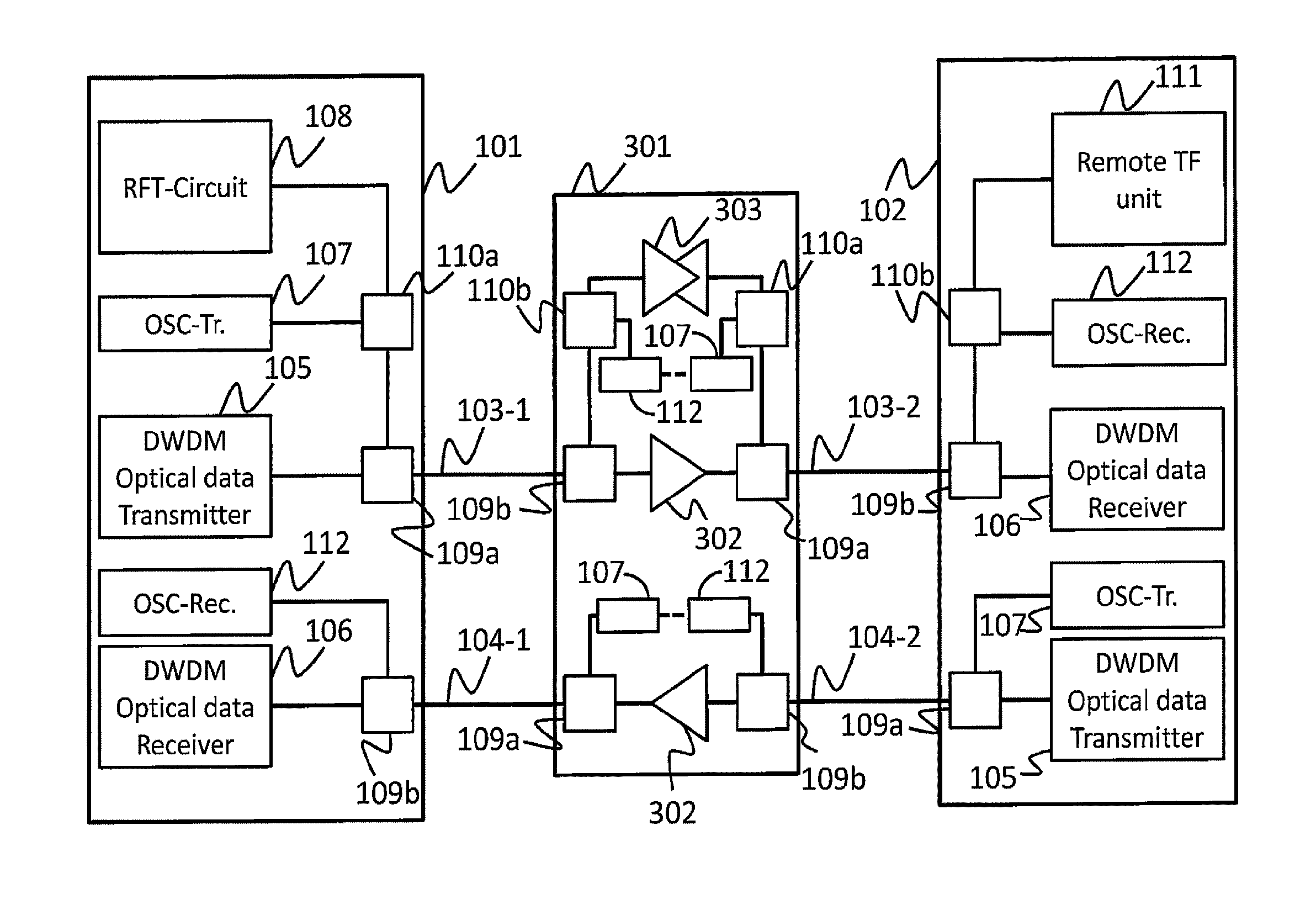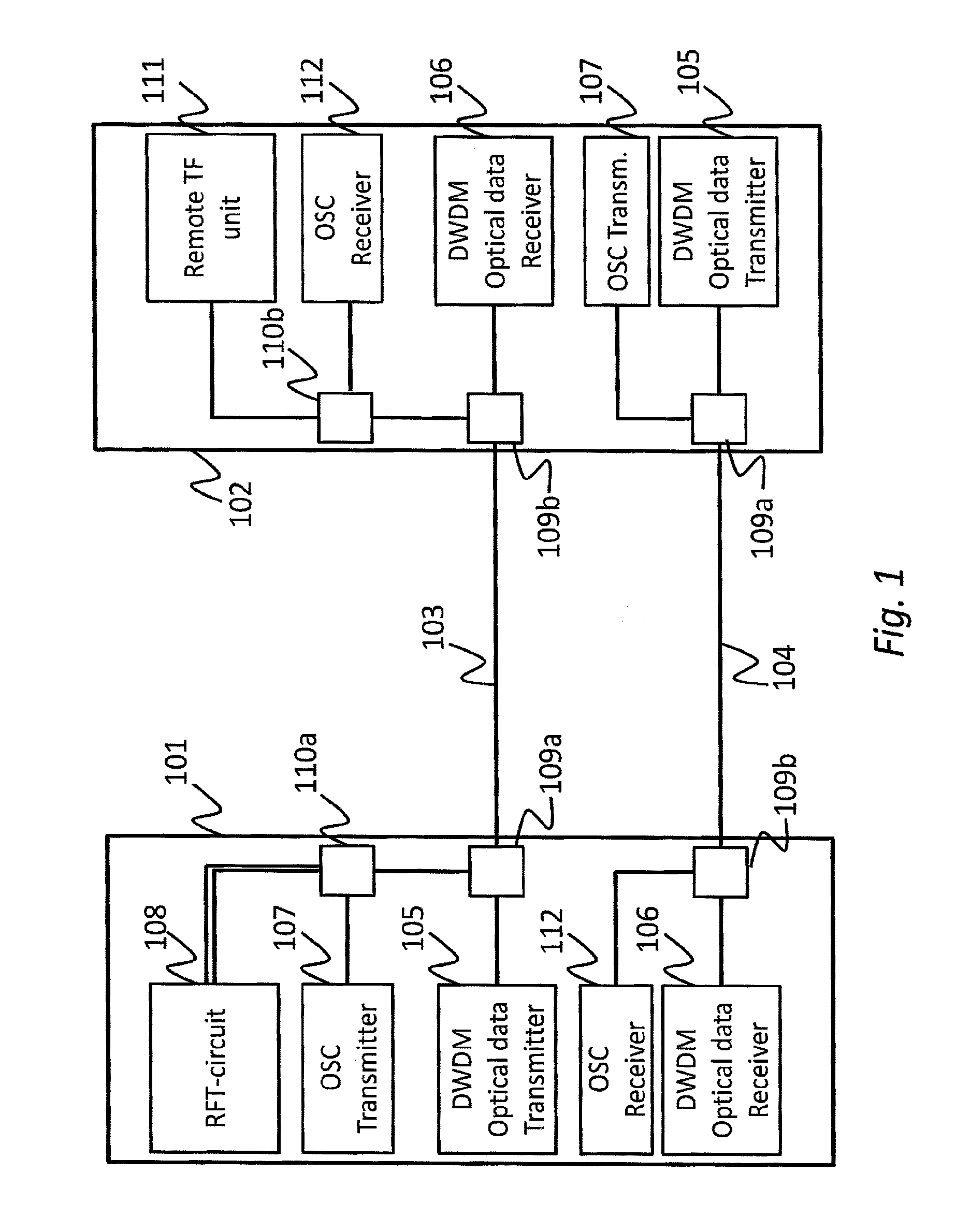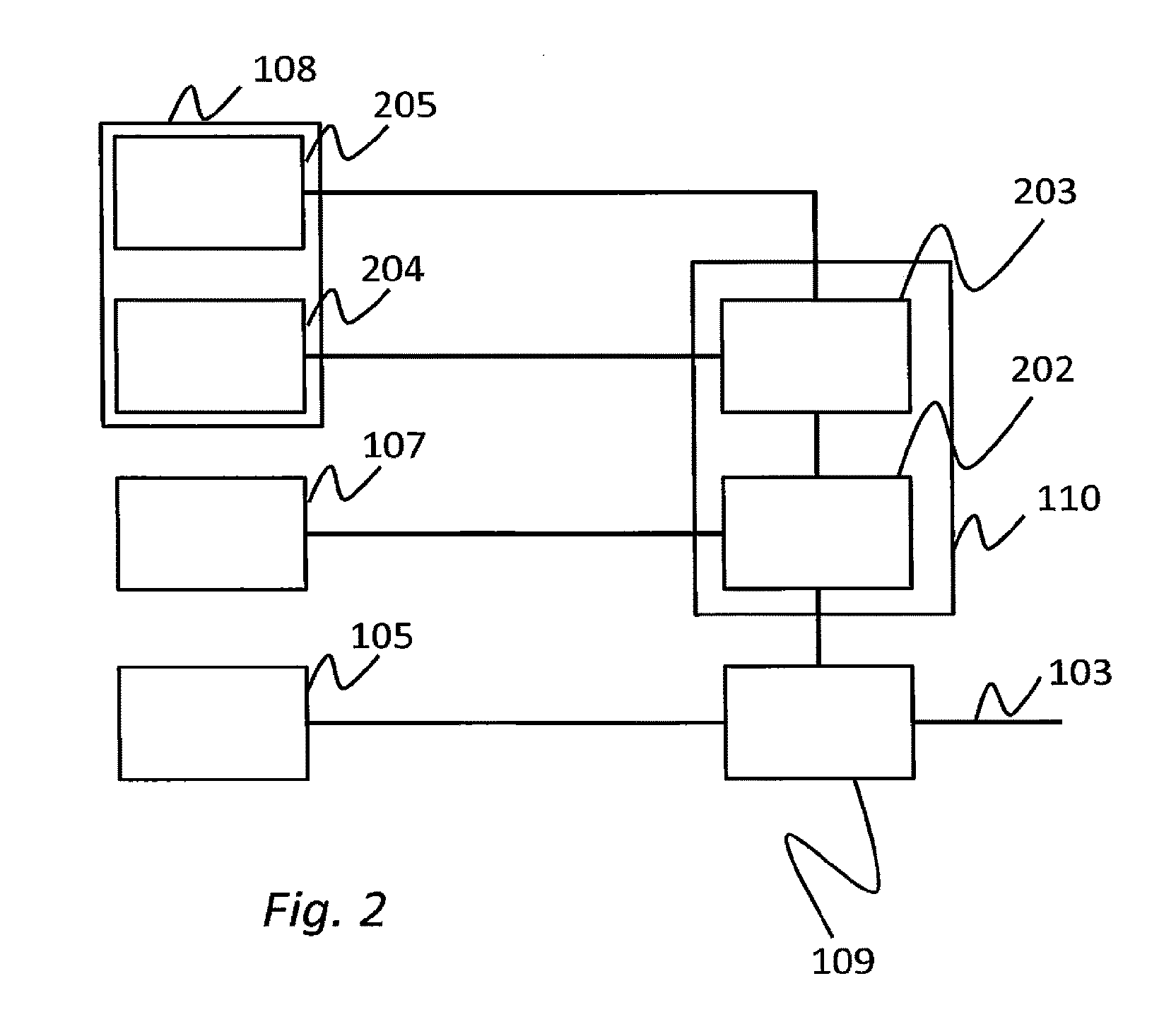System and method for network synchronization and frequency dissemination
- Summary
- Abstract
- Description
- Claims
- Application Information
AI Technical Summary
Benefits of technology
Problems solved by technology
Method used
Image
Examples
Embodiment Construction
[0018]An embodiment of the invention provides an optical filter for use in a transmitter in a Dense Wavelength Division Multiplexed, DWDM, transmission system, the optical filter comprising: a first port for communicative coupling to a reference frequency and timing circuit; a second port for communicative coupling to an optical supervisory channel, OSC, transmitter unit; and a third port for communicative coupling to a further optical filter arranged for enabling transmission of DWDM optical data over an optical fiber; wherein the optical filter is arranged for: receiving a reference frequency and timing signal via the first port; receiving an OSC signal via the second port; combining the frequency and timing reference signal and the OSC signal so as to form a combined signal; transmitting the combined signal towards the further optical filter via the third port. The reference frequency and timing signal that is combined with the OSC-signal enables a receiver that receives the comb...
PUM
 Login to View More
Login to View More Abstract
Description
Claims
Application Information
 Login to View More
Login to View More - R&D
- Intellectual Property
- Life Sciences
- Materials
- Tech Scout
- Unparalleled Data Quality
- Higher Quality Content
- 60% Fewer Hallucinations
Browse by: Latest US Patents, China's latest patents, Technical Efficacy Thesaurus, Application Domain, Technology Topic, Popular Technical Reports.
© 2025 PatSnap. All rights reserved.Legal|Privacy policy|Modern Slavery Act Transparency Statement|Sitemap|About US| Contact US: help@patsnap.com



